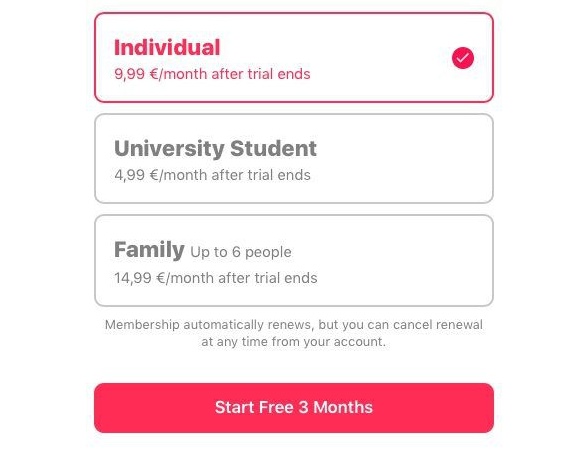This neuroscientist proved your mind is no longer safe.
He doesn't just read thoughts, record dreams, and manipulate memories.
He also showed how the brain can be hacked.
Here’s the shocking truth on Moran Cerf's experiments — and why it threatens your freedom today:🧵
He doesn't just read thoughts, record dreams, and manipulate memories.
He also showed how the brain can be hacked.
Here’s the shocking truth on Moran Cerf's experiments — and why it threatens your freedom today:🧵

Moran Cerf began his career in cybersecurity, working as a penetration tester for banks.
After a meeting with the neuroscientist Francis Crick, he redirected his expertise:
Combining his hacking background with neuroscience to develop unconventional and radical methods
After a meeting with the neuroscientist Francis Crick, he redirected his expertise:
Combining his hacking background with neuroscience to develop unconventional and radical methods

At Caltech, he pioneered groundbreaking research using electrodes placed directly on patients' brains during surgery.
This allowed him to record individual neuron activity while people were awake and thinking
This shift provided unprecedented access to conscious thought.
This allowed him to record individual neuron activity while people were awake and thinking
This shift provided unprecedented access to conscious thought.
He discovered that specific neurons respond to precise thoughts
For example, when we think about the Beatles, distinct neurons are activated
His team mapped 1000s of responses to faces, places, and celebrities
They learned to identify thoughts just by watching neural patterns
For example, when we think about the Beatles, distinct neurons are activated
His team mapped 1000s of responses to faces, places, and celebrities
They learned to identify thoughts just by watching neural patterns
His research also leverages a truth about memories: they change each time we recall them.
The modified version permanently overwrites the original.
His research proved it's more fragile than we imagined
Memories can be altered without you ever knowing.
The modified version permanently overwrites the original.
His research proved it's more fragile than we imagined
Memories can be altered without you ever knowing.
We trust our thoughts without question.
Our strongest beliefs feel unshakeable.
His research proved this confidence rests on shifting sand.
The brain creates false narratives to explain our choices.
Your deepest convictions might be fabrications.
Our strongest beliefs feel unshakeable.
His research proved this confidence rests on shifting sand.
The brain creates false narratives to explain our choices.
Your deepest convictions might be fabrications.

The team unlocked access to human dreams.
Their electrodes captured brain activity during sleep.
They could watch as minds created nightly simulations.
The most private sanctuary of consciousness opened to observation.
Dream content emerged in real-time.
Their electrodes captured brain activity during sleep.
They could watch as minds created nightly simulations.
The most private sanctuary of consciousness opened to observation.
Dream content emerged in real-time.
His experiments proved dreams aren't random neural noise.
The brain remains highly active during sleep, which has been known for a long time
With implants, he can now extract dream content directly by observing brain activity... without relying on verbal reports from subjects.
The brain remains highly active during sleep, which has been known for a long time
With implants, he can now extract dream content directly by observing brain activity... without relying on verbal reports from subjects.
The security risk isn't just theoretical concerns
Neural implants will broadcast thoughts to external servers
Hackers could intercept and manipulate these brain signals
False information could route directly into your consciousness
And you wouldn't even know it was happening
Neural implants will broadcast thoughts to external servers
Hackers could intercept and manipulate these brain signals
False information could route directly into your consciousness
And you wouldn't even know it was happening
That said,
there are always positive implications.
The technology has promising medical applications.
Neural implants could:
• enhance human capabilities,
• improve health,
• correct brain disorder and disease.
there are always positive implications.
The technology has promising medical applications.
Neural implants could:
• enhance human capabilities,
• improve health,
• correct brain disorder and disease.
But is also perilous.
They could also create unprecedented inequality - a divide between enhanced and unenhanced minds
Then, if your neural implant broadcasts the thought to servers, instantly giving you directions...
Who else might intercept those brain signals?
Governments?
They could also create unprecedented inequality - a divide between enhanced and unenhanced minds
Then, if your neural implant broadcasts the thought to servers, instantly giving you directions...
Who else might intercept those brain signals?
Governments?
Your brain naturally runs simulations during dreams to guide decisions.
Neural technology will access these internal processes.
We forget most dreams, but their emotional impact persists, subtly guiding our choices.
The manipulation of thought becomes undetectable.
Neural technology will access these internal processes.
We forget most dreams, but their emotional impact persists, subtly guiding our choices.
The manipulation of thought becomes undetectable.
Cerf's discoveries reveal both the remarkable potential and risks of neural technology.
He is one of the brilliant and convincing scientists who don't see the danger when science means "we'll make money"
Will we face unprecedented threats to privacy and consciousness itself?
He is one of the brilliant and convincing scientists who don't see the danger when science means "we'll make money"
Will we face unprecedented threats to privacy and consciousness itself?
Thanks for reading
Follow @jokowords for more about tech/business/psy-marketing
BTW,
I am looking for 3 tech founders or CEOs who want to get more eyes on their brand/product or themselves
DM me, and we will chat↓
x.com/messages/compo…
Follow @jokowords for more about tech/business/psy-marketing
BTW,
I am looking for 3 tech founders or CEOs who want to get more eyes on their brand/product or themselves
DM me, and we will chat↓
x.com/messages/compo…
• • •
Missing some Tweet in this thread? You can try to
force a refresh





















